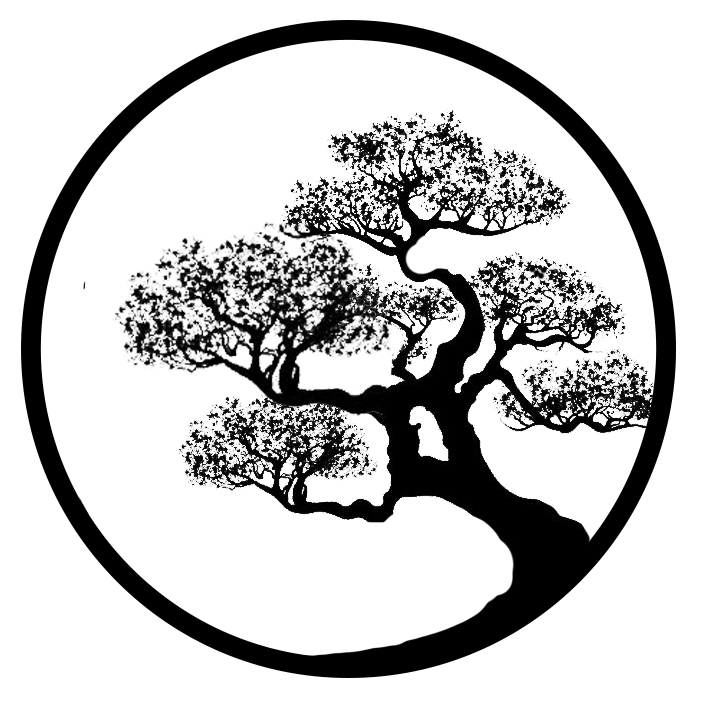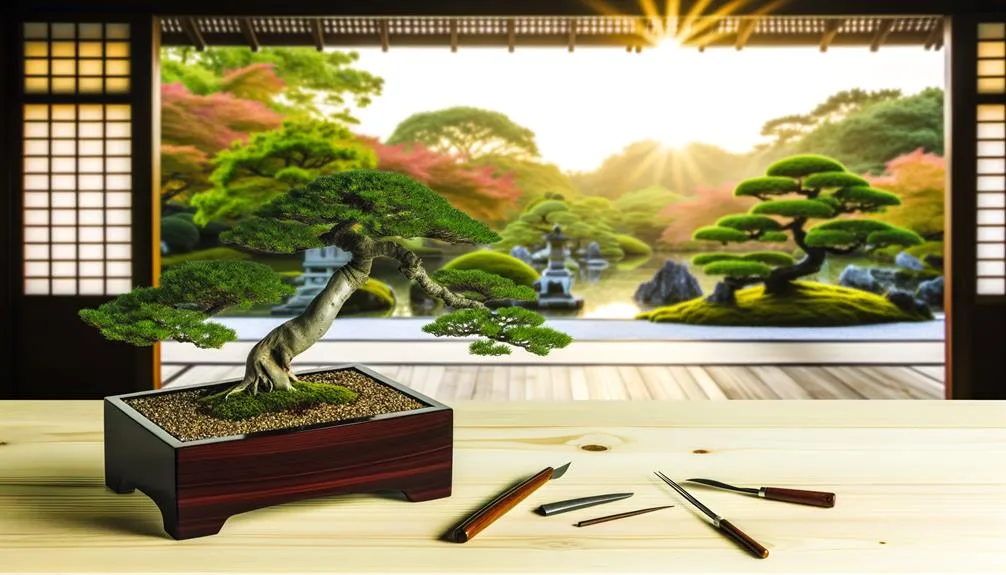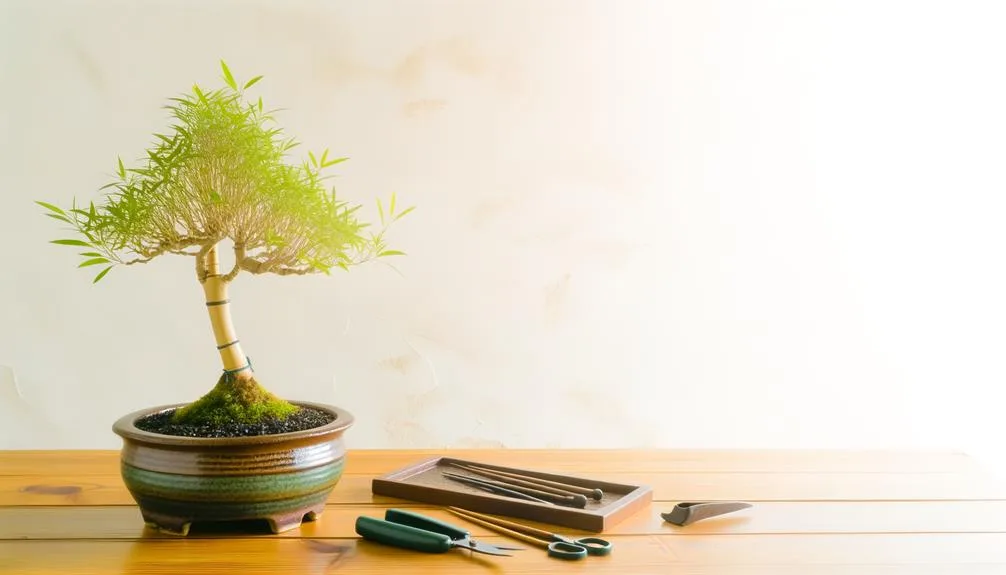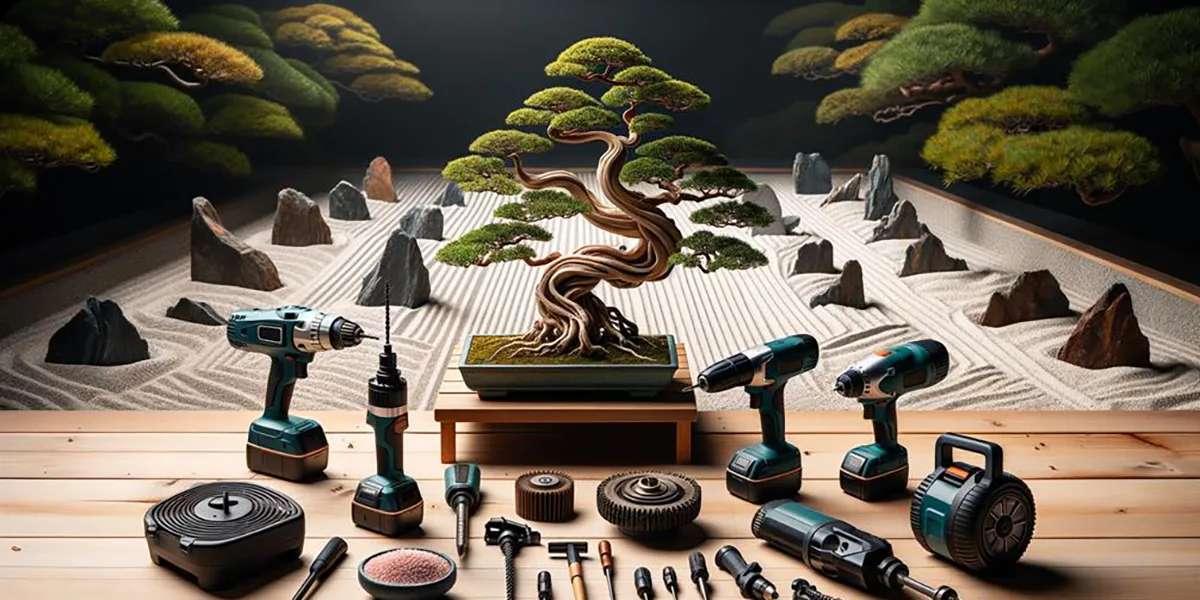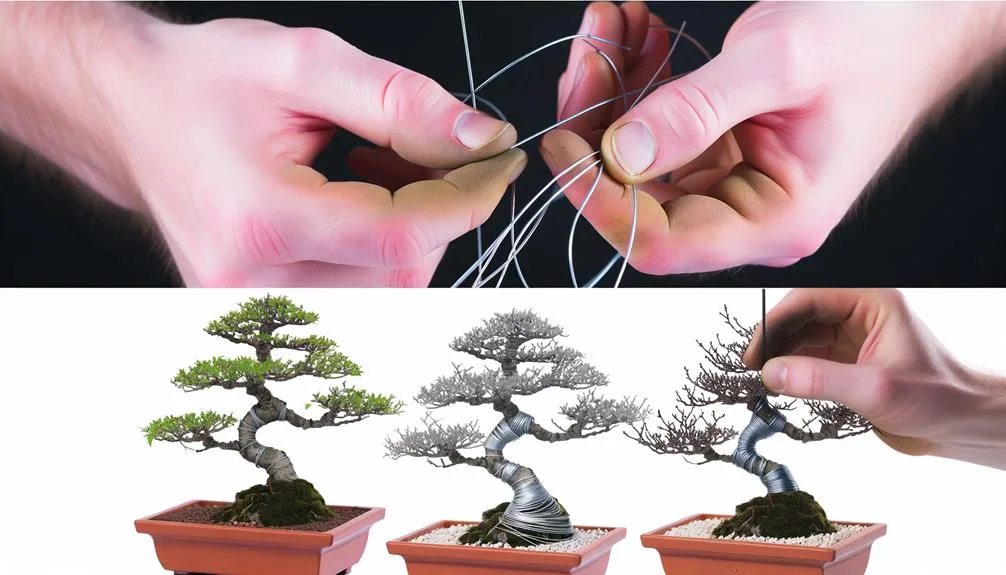The Slanting Bonsai Style, known as “Shakan” in Japanese, is a popular and visually striking form of bonsai that represents trees naturally inclined due to various environmental factors like wind or the weight of snow. Unlike trees that grow straight upwards, slanting bonsai mimic those that have adapted to their surroundings by growing at an angle.
You might think that mastering the slanting bonsai style is too challenging for a beginner, but I assure you, it’s not as daunting as it seems. This approach, although it demands a touch of finesse, is certainly something that I managed to get a hold of.
By grasping the fundamental techniques and drawing inspiration from the craftsmanship of others, I was able to create a slanting bonsai that not only amped up the aesthetic appeal of my space, but also mirrored my personal style.
Key Takeaways
- Slanting bonsai represents resilience and adaptability.
- The trunk maintains a straight posture but inclines to one side.
- The aesthetics of the slanting bonsai style include the selection of appropriate tree species.
- Positioning the tree’s rootball at a certain inclination in the soil.
Comprehending the Slanting Bonsai Style
To fully grasp the slanting bonsai style, one should know that it’s not merely about aesthetics; it’s a representation of resilience and adaptability, commonly used for coniferous trees. This style is a favored selection for bonsai artists, producing the illusion of a tree growing on a slope. The slant style trunk rises from the soil at an angle, offering a distinctive and remarkable look.
Creating this bonsai style isn’t as demanding as one might presume. The primary point is to pick a suitable tree species – consider coniferous. One then molds and directs the trunk into a slanted position using wire. It’s a gentle process, but with endurance and careful management, one can achieve a balanced look.
Characteristics of Slanting Bonsai Style:
- Trunk Angle: The most defining feature of the Slanting Bonsai Style is the angle of the trunk. Instead of growing vertically, the trunk emerges from the soil at an angle, typically between 60 to 80 degrees relative to the ground. The angle creates a sense of movement and dynamism, as if the tree is reaching out or bowing.
- Apex Alignment: In many cases, the apex (the top) of the tree is positioned directly above the base of the trunk, creating a visual balance despite the slant. This alignment helps maintain a sense of stability and natural growth.
- Branch Distribution: The branches of a slanting bonsai typically grow more vigorously on the side opposite the lean to counterbalance the trunk’s angle. This distribution of branches helps create a fuller look and adds to the tree’s overall aesthetic appeal.
- Root Structure: The roots on the side of the lean are often more exposed and developed compared to the opposite side. This not only reflects how trees in nature adapt to support themselves but also adds to the visual interest at the base of the bonsai.
Key Techniques for Slanting Bonsai
You now possess fundamental knowledge of the slanting bonsai style, so let’s examine the crucial techniques necessary to create and sustain this distinct form.
The slanting bonsai style revolves around giving off the impression of a tree bravely growing on a slope against all odds. It embodies toughness and the capacity to adjust, and with the correct methods, you can emulate this aesthetic with your bonsai.
Here are the crucial techniques for slanting bonsai:
- The trunk maintains a straight posture but inclines to one side. This is realized through meticulous shaping with wire.
- The bonsai should be situated in a spot with ample light. Sufficient sunlight is crucial for the tree’s wellbeing.
- The branches and leaves construct a balanced, asymmetrical silhouette. This is upheld with frequent pruning.
Take care to avoid usual errors such as utilizing feeble tree species, aggressive bending, and excessive watering. Opt for sturdy species like Japanese black pine, juniper, spruce, or maple.
With time and tender care, you can become proficient in the art of slanting bonsai styles. Bonsai isn’t merely a pastime, it’s a continuous journey of acquiring new knowledge.
The Artistic Appeal of Slanting Bonsai
You may wonder what makes slanting bonsai so appealing.
It’s not just the technique, but also the aesthetics and the inspiration behind it.
Let’s explore this fascinating art form together.
Slanting Bonsai Aesthetics
Examining the aesthetics of the slanting bonsai style, it’s easy to appreciate its appeal among enthusiasts, given the beautiful illusion of a tree courageously growing on a slope. The art of Bonsai, particularly the slanting bonsai style, presents a unique combination of natural beauty and artistic interpretation, encapsulating resilience and adaptability.
Grasping slanting bonsai aesthetics involves admiring:
- The selection of appropriate tree species, exhibiting their inherent traits and growth behaviors.
- The subtle equilibrium achieved through meticulous wiring and pruning methods.
- The motivation derived from nature, reflected in the bonsai’s slanting stance.
Gaining proficiency in the art and methods of the slanting bonsai style can offer you a fulfilling pastime and a more profound bond with nature.
Techniques in Slanting Bonsai
The art of mastering the techniques associated with the slanting bonsai style facilitates the creation of a visually captivating artwork that echoes the essence of nature.
The primary technique in slanting bonsai includes positioning the tree’s rootball at a certain inclination in the soil. This initial step is important as it dictates the direction of the tree’s growth.
The subsequent aspect to pay attention to is the tree’s height. Trimming and pruning the tree to maintain its proportion is vital. Keep in mind, the taller the tree, the more noticeable the slant needs to be.
The methods and inspirations related to slanting bonsai style revolve around balance and harmony. With time, persistence, and practice, these techniques can be mastered, encapsulating the magnificence of nature in a reduced scale.
Inspiration Behind Slanting Bonsai
The slanting bonsai style, with its understated lean and robust endurance, reflects the splendor of trees braving the elements on a mountainside or incline. This style diverges from the formal upright style, offering you an opportunity to experiment with the innate slope of a tree. It’s this motivation behind slanting bonsai that distinguishes it.
The bonsai pot signifies the severe landscape, pushing the tree to adjust.
The slanted trunk symbolizes the tree’s battle and resilience in the face of hardship.
The styles and forms of the tree are an affirmation of its survival, a tribute to the persistence of nature.
Accept the slanting bonsai style. It’s not just an art form, it’s a narrative of survival, an affirmation of nature’s endurance, and a challenge to your bonsai expertise.
Comparing Bonsai Styles: Slanting Vs Others

When you compare the slanting bonsai style with others, you’ll notice unique characteristics. It’s unlike the upright bonsai, for instance, in both shape and the nuances of care.
Let’s explore these differences more and understand why the slanting style stands out.
Distinctive Characteristics of Slanting
Unlike other bonsai approaches, the Slanting Bonsai, or Shakan, is recognized for its special 60-80 degree tilt and well-developed roots on one side. This bonsai form bears witness to the art’s capability to replicate trees found in the wild.
Here are some unique aspects of slanting to keep in mind:
- It merges numerous styles, producing tension and movement.
- It necessitates the use of carefully chosen species, such as Japanese Black Pine or Juniper, which are well-suited to the slanting shape.
- Its upkeep includes meticulous pruning and regular attention, reflecting your personal style and imagination.
Slanting Vs Upright Bonsai
Drawing comparisons between the Slanting and Upright Bonsai styles, you’ll observe key differences in their aesthetics, care requirements, and suitable tree species.
For the Slanting bonsai, the trunk leans at a 60-70 (67) degree angle, giving an impression of resilience. The base of the trunk is strong, supporting the slanting form. You’ll need to cautiously wire and prune this style, often used for conifers like pines or junipers.
On the flip side, the Upright bonsai features a straight and upright trunk, suggesting strength and stability. It’s simpler to maintain, typically requiring less wiring.
Both slanting vs upright bonsai possess unique charms and challenges. Familiarizing with these will assist you in choosing a style that matches your personal aesthetics and plant care skills.
Common Challenges in Slanting Bonsai Cultivation
Growing a slanting bonsai often poses distinctive difficulties that you must address for optimal outcomes. The tree’s roots, for example, need particular attention to sustain the slanting bonsai style. This style, though visually appealing, can be challenging to master without the correct methods and inspirations.
Typical difficulties in slanting bonsai cultivation involve:
- Choosing a tree species appropriate for this design. The tree should have a robust, malleable trunk that can support the slant.
- Achieving equilibrium. This design forces the tree to retain a slanted posture, which can be difficult, particularly with elongated branches.
- Routine care. The tree necessitates meticulous wiring and pruning to avoid harm and maintain the slanting shape.
Another hurdle is avoiding a windswept look. You need to strike a balance between the windswept traits and the formal and informal upright branching structures for a strong, steady look.
Overcoming these difficulties will aid you in cultivating an impressive slanting bonsai. Bear in mind that practice and patience are crucial in mastering this unique and lovely art form.
Sources of Inspiration for Slanting Bonsai

A plethora of ideas for the slanting bonsai style, or Shakan, can be found in the resilience and adaptability it represents. Trees that grow straight become Shakan when forces such as wind or environment conditions cause them to lean either left or right. This lean is a testament to their ability to cope and adjust to environmental pressures.
Draw your inspiration from nature itself. Observe how a tree sprouts from the earth, defiantly leaning yet continuing to grow, to flourish. This is the very essence of Shakan, a symbol of survival and resilience. It’s a remarkable demonstration of how life adapts and perseveres against all odds.
The apex of the bonsai is where your artistic expression can truly soar. This is where you can bestow upon the tree its personality, its distinctiveness. The apex doesn’t need to be flawless; it just has to tell a story – a tale of strength, of persistence, of resilience.
Case Studies: Beautiful Slanting Bonsai Trees
Let’s examine the realm of slanting bonsai trees by observing some exquisite instances that perfectly represent the technique’s distinct appeal and intricacy. These instances of stunning slanting bonsai trees will serve as a reference for crafting your unique work of art.
A few remarkable examples are prominent in the United States:
- The Japanese Black Pine, leaning dramatically to one side, presents a visual intrigue with its intricate root system and cascading branches.
- The Trident Maple, its trunk twisted just slightly away from vertical, represents the subtlety of the slanting bonsai style: techniques and inspirations are evident in its delicate equilibrium.
- The Shimpaku Juniper, with a more severe slant, demonstrates how the tree’s natural growth can be manipulated to challenge the viewer’s perspective.
Each tree, distinct in its design, provides insight into the combination of artistry, patience, and comprehension of nature that the slanting bonsai style requires. The objective isn’t to force the tree into an unnatural form, but rather to guide its growth to portray an augmented version of its natural self. With attention and practice, you too can craft a stunning slanting bonsai tree.
Tips to Maintain Your Slanting Bonsai
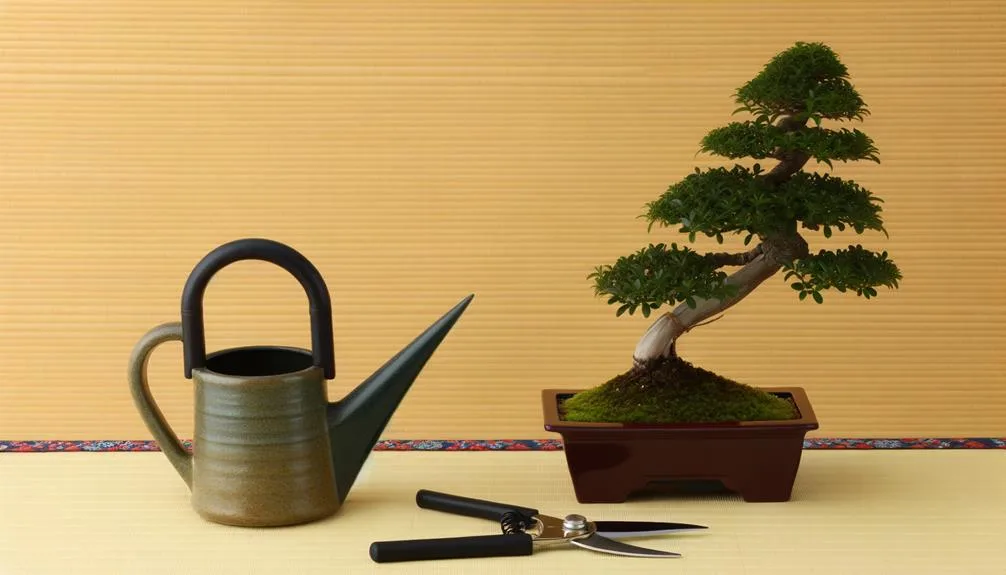
Maintaining a slanting bonsai might seem complex, but with the correct guidance, it’s manageable. Your attentiveness and dedication in looking after your bonsai trees are essential for their flourishing and aesthetic.
Begin by selecting a tree with a sturdy, adaptable trunk. This is significant as the slanting bonsai style mirrors trees seen in nature, having a slant due to winds or gravity.
Make sure your bonsai receives enough sunlight. It flourishes when leaves form a ball-shaped cluster, facilitated by fine branching. This style absorbs light efficiently, encouraging healthier growth. Safeguard your bonsai from harsh weather, though, as it can damage the tree.
Watering involves a watchful equilibrium. Avoid excessive watering as it results in root rot. Keep an eye on the soil’s moisture content to determine when to water. Also, occasionally inspect your bonsai’s wiring. Modify as necessary to avert trunk damage.
Lastly, pick the appropriate species for your slanting bonsai. Japanese black pine, juniper, spruce, and maple are suited.
With these tips to maintain your slanting bonsai, you’ll soon be proficient in the slanting bonsai style: methodologies and inspirations obtained from observing nature.
Frequently Asked Questions
How Do You Make a Slanting Bonsai Tree?
You’ll start by selecting an ideal species, then manipulate its roots. Use wire training for growth management. Choose a pot that suits your tree and consider environmental conditions to create a slanting bonsai.
What Is the Slanting Bonsai Style Shakan?
Shakan, or slanting bonsai style, is unique for its symbolic resilience. It’s maintained by careful pruning and wiring. Aesthetically, Shakan creates an illusion of a tree leaning against wind or growing in shadow.
What Are the Styling Techniques Performed for Bonsai Plants?
To style your bonsai, you’ll focus on pruning techniques, wire shaping, and leaf trimming. Root pruning and bonsai repotting are also crucial. Remember, aesthetic considerations matter, so each cut should enhance the tree’s miniaturized beauty.
What Is Cascade Style of Bonsai?
You’d shape a cascade bonsai, or Kengai, to mimic a tree falling down a mountainside. Select a flexible species, and a deep pot. Mindful pruning, seasonal care, and suitable growth conditions are key.
